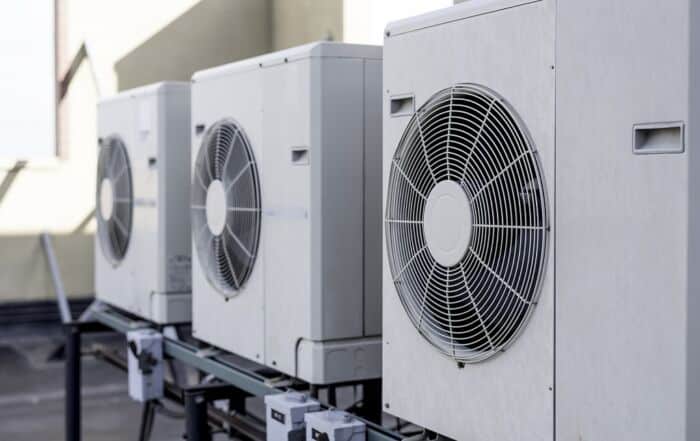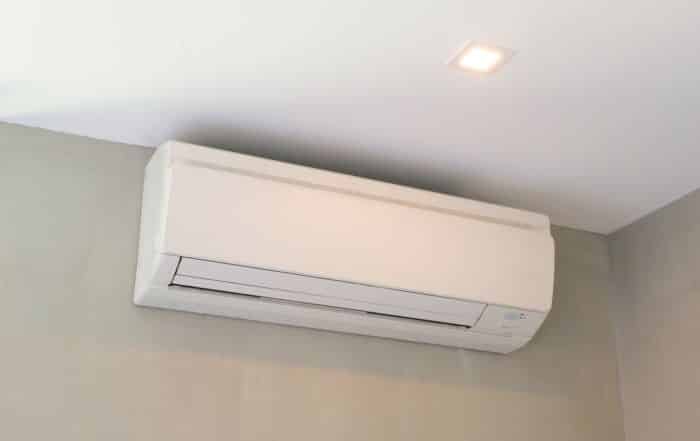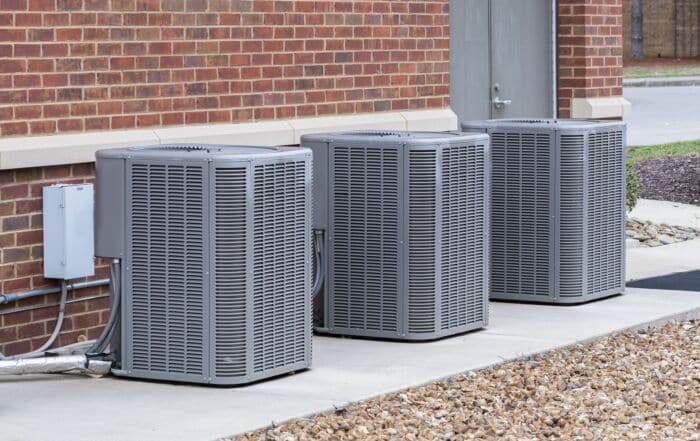Air conditioning systems are like intricate puzzles, each requiring careful attention and troubleshooting in order to identify and repair problems. When the condensate drain is blocked, an air conditioner will not work properly and can lead to costly repairs if it is not fixed quickly. This article will provide a comprehensive introduction to troubleshooting a blocked condensate drain in an air conditioning system. It's one of the AC troubleshooting articles we publish to help homeowners understand how an AC system works and how to diagnose common issues.
The purpose of this article is to provide readers with a general understanding of what can cause a blocked condensate drain, how to diagnose the problem, and how to fix it. It will also explain some of the common signs that indicate there may be an issue with the condensate drain.
Understanding the common causes of a blocked condensate drain can help homeowners save time and money on repairs. With this knowledge, they can more accurately diagnose issues and determine if they need professional assistance or not. Having insight into these issues can also empower homeowners to make informed decisions when purchasing an air conditioning system for their home.
Causes Of Blocked Condensate Drain
Air conditioning systems require a condensate drain in order to carry away excess moisture and humidity. Blockage of the condensate drain can be caused by a range of factors, including biological growth, debris, and scale buildup. These blockages can cause water leakage from the air conditioning unit, resulting in property damage or potential health risks such as mould growth. In order to prevent this from occurring, it is important to identify the causes of blocked condensate drains and take steps to remedy them.
Common causes of blocked condensate drains include debris such as dirt, dust and leaves that may have been sucked into the system; scale buildup due to hard water; corrosion of metal components; and biological growth such as algae or mould. In some cases, inadequate maintenance or poor installation may also lead to blockage. The location of the drainage system should be identified in order to determine its condition and any blockages present.
How To Locate The Drainage System
In order to address a blocked condensate drain, it is necessary to locate the drainage system. It is important to note that in most cases, the condensate drainage system will be located outside of the unit. In some instances, however, it may be found inside the unit. The exact location of the drainage system can be identified by consulting the user manual for the specific make and model of air conditioning unit in use.
Once the location of the drainage system has been determined, it is then possible to begin preparing for troubleshooting. It may be useful to obtain a few tools and supplies in advance so that any potential issues can be addressed quickly and effectively.
Preparing For Troubleshooting
When troubleshooting a blocked condensate drain, it is important to be well prepared. First, gather the necessary tools and materials. These could include a flashlight, screwdriver, pliers, pipe cleaner and possibly a vacuum. It may also be helpful to have on hand a manual for the air conditioning unit or access to an online database of information about the unit. Additionally, make sure that the power to the air conditioning system is off before beginning any work on it. Once all of these preparations have been made, it is time to check the indoor unit for signs of trouble.
Checking The Indoor Unit
The indoor unit of an air conditioning system is generally located on the side of the indoor AC unit (refer to image above for an example of the condensate drain on a Carrier system) which contains the evaporator coil. To check for a blocked condensate drain, it is necessary to inspect the indoor unit for signs of water leakage or damage due to overflow. If any signs of leakage are present, then it is likely that the condensate drain is blocked. In this case, further investigation may be necessary, such as removing the access panel and inspecting the evaporator coils and drainage system. Additionally, visual inspection should also be conducted in order to determine if any dirt or debris is blocking the drains, which can cause water accumulation and in turn lead to water leakage.
Clearing Clogs From Drains And Pipes
As the old adage goes, "An ounce of prevention is worth a pound of cure". Air conditioning troubleshooting should always start with preventive maintenance and service of the drain line to avoid clogs in the future. The drainage system for air conditioners can become blocked due to accumulated dust and debris, which needs to be cleared out regularly. There are several methods for clearing clogs from drains and pipes, such as using a plumber’s snake or a garden hose connected directly to the outdoor condenser unit. Additionally, chemical drain openers can be used to dissolve any clogs if necessary. It is important to note that these chemical drain openers must be handled with care and according to safety guidelines provided by the manufacturer. After clearing all clogs from drains and pipes, it is essential to test the main drain line with a wet/dry vacuum to ensure that no blockages remain. This will help prevent future issues with air conditioning trohttps://www.dallasheatingac.com/troubleshooting/ubleshooting related to blocked condensate drains.
Testing The Main Drain Line With A Wet/Dry Vacuum
Before testing the main drain line, the user should make sure that the power is turned off to the unit. A wet/dry vacuum should be used to test for blockages in the main drain line. The vacuum should be attached to a piece of flexible tubing that is long enough to reach from the vacuum hose connection to inside the condensate pan. It is important to ensure that all parts are securely connected and sealed before beginning the test.
If any water or debris is discovered in the condensate pan, it must be removed with a cloth or paper towel before proceeding further. If no blockage is found, then it may be necessary to clean and disinfect an air conditioning system as detailed in the subsequent section.
Cleaning And Disinfecting An A/C System
Cleaning and disinfecting an air conditioning system is a necessary part of routine maintenance. To ensure proper functioning of the system, it is important to use a biocide or fungicide that is compatible with the type of material used in the system. The biocide should be applied every six months using a foam applicator gun. It is important to follow manufacturer instructions for dilution rates and application procedures.
After application, it is imperative to flush the system with clean water for at least 15 minutes to ensure all residue has been removed. This will help preserve the components and reduce the risk of corrosion or clogging due to bacterial growth. Once complete, check all seals and fittings for leaks before turning on the system again. With these steps taken, an air conditioning unit can remain in optimal condition for longer periods of time. Moving forward, unclogging stubborn blockages may need to be addressed in order to maintain peak performance of the unit.
Unclogging Stubborn Blockages
When a blocked condensate drain is particularly stubborn, there are a few options for unclogging the drain. One method is to use chemical solutions, such as vinegar and baking soda or specialized cleaning agents. These solutions can be poured into the drain to dissolve whatever debris is clogging it. Another option is to use a wet-dry vacuum cleaner with an appropriate attachment to suck out any clogs in the pipe. In some cases, using a plumbing snake may be necessary to break up and remove large pieces of debris that have become lodged in the pipe.
In all cases, it is important to wear protective gear when attempting to unclog a blocked condensate drain, as there may be dangerous chemicals or fumes present and exposure should be limited. After unclogging the drain, replacing any fittings, pipes, and joints that are damaged or corroded will ensure proper drainage moving forward.
Replacing Fittings, Pipes, And Joints
At first, it might seem that clogging a condensate drain is not a serious issue. After all, what does it matter if a little water accumulates in the pan below the air conditioner? Unfortunately, ignoring this issue can lead to much bigger problems. When fittings, pipes, and joints become corroded or blocked due to accumulated water, they need to be replaced.
Replacing these components can be quite costly and labor-intensive. It is critical to regularly inspect and clean the condensate drain in order to prevent this from happening. If the blockage is detected early enough, it may be possible to unclog it without replacing any parts. Regular maintenance will help keep the system running smoothly and efficiently while minimizing repair costs associated with a blocked drain. Moving forward, taking preventive measures such as regular maintenance of an air conditioner are essential for optimal operation and longevity of the system.
Advantages Of Regular Air Conditioner Maintenance
Regular air conditioner maintenance is highly recommended for optimal performance and efficiency. It can help to extend the life of an air conditioning system and reduce energy costs by up to 15%. Regularly checking filters, inspecting coils, and cleaning drains are important tasks that should not be overlooked.
By conducting regular inspections of the air conditioner's components, any potential problems can be detected early on. This helps to prevent further damage from occurring or the need for costly repairs. Additionally, regular maintenance ensures that all parts of the system are running at peak efficiency, thus reducing energy consumption and saving money in the long run.
Conclusion
In conclusion, air conditioning troubleshooting is a crucial part of maintaining the ideal environment in any space. Regularly checking and cleaning the drainage system can help prevent blockages from accumulating and causing more serious issues. While it may seem daunting to tackle A/C repairs, having a basic understanding of the components and steps involved can make the task much easier. Taking advantage of the benefits that regular maintenance provides is like a breath of fresh air; it ensures that your air conditioning unit will remain in top condition for years to come. Therefore, don’t hesitate to take action when you notice any signs of blocked drains or other issues with your A/C—acting swiftly will save you time, money, and stress in the long run.
Related Posts
Exploring Ductless Air Conditioning Systems for Small Spaces
If you’re a homeowner tired of sweating through sweltering summers, a ductless air conditioning [...]
Signs Your Air Conditioning Unit Needs Professional Maintenance
Imagine coming home on a sweltering summer day only to find that your air [...]
Common Misconceptions About Air Conditioning Usage and Costs
Air conditioning units are a staple in many homes, especially during the hot summer [...]


